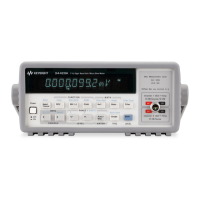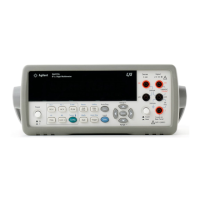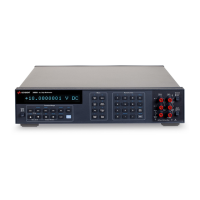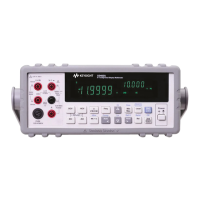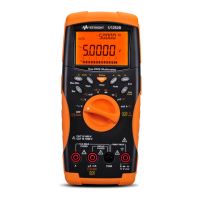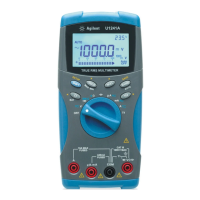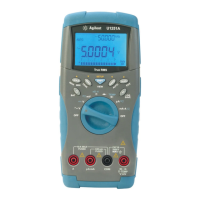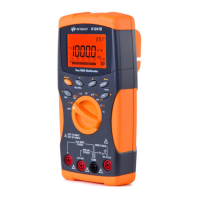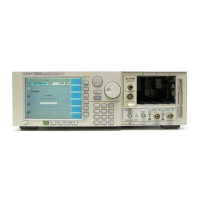Do you have a question about the Agilent Technologies 34401A and is the answer not in the manual?
| Model | 34401A |
|---|---|
| Manufacturer | Agilent Technologies |
| Category | Multimeter |
| DC Voltage Range | 100 mV to 1000 V |
| AC Voltage Range | 100 mV to 750 V |
| Resistance Range | 100 Ω to 100 MΩ |
| Frequency Range | 3 Hz to 300 kHz |
| Interface | GPIB, RS-232 |
| Display Digits | 6.5 digits |
| Resistance Accuracy | 0.01% + 0.001% of range |
| Measurement Speed | Up to 1000 readings/second |
| Operating Temperature | 0°C to 50°C |
| DC Current Range | 100 μA to 3 A |
| AC Current Range | 100 μA to 3 A |
Highlights CAUTION and WARNING notices for safe operation.
Steps to verify the multimeter is ready, including checking items and power-on.
Steps to resolve issues if the multimeter does not turn on.
Procedures for measuring voltage, resistance, current, and frequency/period.
Procedure for null measurements and editing the null value.
How to store and read minimum, maximum, average, and count values.
Procedure for calculating dB measurements relative to a stored value.
Procedure for calculating dBm measurements referenced to 1 milliwatt.
How to use single, external, or auto trigger modes for measurements.
How to capture and hold a stable reading on the display.
Procedure for calculating DC voltage ratios using sense and input terminals.
How to store and retrieve up to 512 readings in internal memory.
Information on configuring the multimeter for making measurements.
Overview of five math operations: Null, Min-Max, dB, dBm, Limit Test.
How to store and read minimum, maximum, average, and count values.
Procedure for null measurements and editing the null value.
Procedure for calculating dB measurements relative to a stored value.
Procedure for calculating dBm measurements referenced to 1 milliwatt.
How to perform pass/fail testing using upper and lower limits.
Overview of the multimeter's triggering system for manual or automatic measurements.
Inserting a delay between trigger and sample for settling or pacing.
How to capture and hold a stable reading on the display.
How to store and retrieve up to 512 readings in internal memory.
How the ERROR annunciator and error queue function.
Details on power-on self-test and complete self-test.
Information on configuring GPIB and RS-232 interfaces.
Security features to prevent accidental or unauthorized calibration.
Procedure to unsecure the multimeter for calibration using front panel or remote interface.
Procedure to secure the multimeter against calibration.
How to change the security code for calibration.
Instructions for replacing power-line and current fuses.
Details power-on and reset states for various multimeter configurations.
Summary of SCPI commands for programming the multimeter.
SCPI commands for configuring measurements like function, range, and resolution.
SCPI commands for performing math operations (Null, Min-Max, dB, DBM, Limit).
SCPI commands for controlling measurement triggering events and timing.
Seven-step sequence for programming measurements using MEASure? and CONFigure.
Details on using MEASure? and CONFigure commands for measurement setup.
Overview of the multimeter's triggering system for manual or automatic measurements.
Inserts a delay between trigger signal and sample.
Procedure to set the multimeter's GPIB address (0-31).
Procedure to select between GPIB and RS-232 remote interfaces.
Procedure to select the baud rate for RS-232 communication.
Procedure to select parity and data bits for RS-232 communication.
SCPI commands for system functions like display, beep, and errors.
Explains the SCPI status system with register groups and their functions.
SCPI commands for querying error queues, status registers, and test results.
SCPI commands for calibration procedures, security, and messages.
Details on connecting and configuring the RS-232 interface.
SCPI commands for controlling RS-232 operation (Local, Remote, RWLock).
Overview of the SCPI language, hierarchical structure, and subsystems.
How to use the IEEE-488 device clear message or Ctrl-C to halt measurements.
General information on error retrieval, the error queue, and error annunciator.
Guides on achieving accurate measurements by avoiding common errors.
Accuracy specs for DC voltage, resistance, current, continuity, diode, and ratio.
Accuracy specs for True RMS AC voltage and current, and frequency errors.
Accuracy specifications for frequency and period measurements.

